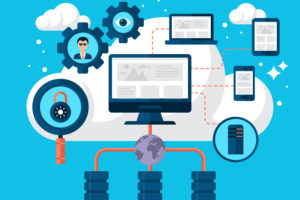If there’s one thing small business owners in Minneapolis – St. Paul knows that unexpected disruptions can happen anytime, from severe Midwest storms to sudden cyberattacks. Yet, many local businesses still lack a proper disaster recovery plan to protect their data and operations when the unexpected strikes.
In a region where extreme weather, power outages, and cybersecurity threats are becoming more frequent, having a reliable disaster recovery checklist isn’t optional; it’s essential. With the right combination of managed IT support and backup & recovery solutions, Twin Cities businesses can stay online, secure, and operational no matter what happens.
1. What Disaster Recovery Means for Minneapolis-St. Paul Businesses
Disaster recovery (DR) refers to restoring IT systems, networks, and data after disruptions such as cyberattacks, hardware failure, or natural disasters. It’s a crucial part of any business continuity strategy.
For small and medium-sized businesses (SMBs) in Minneapolis–St. Paul, this could mean recovering from:
- Power outages during winter storms
- Tornado or flood damage to local servers
- Ransomware attacks targeting regional companies
- Hardware failure or data loss due to human error
A well-structured DR plan minimizes downtime, protects sensitive data, and ensures your customers and partners can rely on your business even during chaos.
2. Assess Local Risks and Identify Critical Assets
Before you can recover from a disaster, you need to understand what you’re protecting. Conduct a local risk assessment that considers both digital and environmental threats common in Minnesota, such as:
- Blizzards and ice storms are causing extended power loss
- Flash floods are damaging office infrastructure
- Cyberattacks and phishing targeting small businesses
- Internet or network outages
Next, list your critical business assets and the systems your business can’t function without:
- Accounting and billing software
- Customer databases and CRM systems
- Cloud-based applications
- Email and communications tools
- Inventory and logistics data
Your local Managed IT Support Minneapolis provider can help identify these assets and design a tailored recovery plan that fits your business size and risk profile.
3. Set Clear RTO and RPO Targets
Two of the most important components of disaster recovery are:
- Recovery Time Objective (RTO): How quickly do you need to restore operations after a disaster.
- Recovery Point Objective (RPO): How much data loss (in time) your business can tolerate.
For example, a Minneapolis-based retail store may need an RTO of 2 hours to resume online sales, while a local accounting firm may require an RPO of 15 minutes to prevent data loss.
Local backup & recovery solutions can be configured to meet your unique RTO and RPO goals using cloud and on-site systems.
4. Use a 3-2-1 Backup Strategy
A reliable backup is your lifeline when disaster strikes. Use the 3-2-1 rule:
- 3 copies of your data
- 2 different storage types (local and cloud)
- 1 off-site backup outside your office
For Twin Cities businesses, local managed IT support teams like Vodigy offer hybrid backup & recovery solutions that combine on-site backups for fast restoration and cloud storage for secure off-site protection.
Automated backups and regular integrity checks ensure your data stays safe even if a blizzard or power outage takes down your primary systems.
Learn more about Vodigy’s Backup & Recovery Solutions for Minnesota Businesses.
5. Document a Clear Step-by-Step Recovery Plan
When disaster strikes, time is everything. A detailed disaster recovery plan ensures your team knows exactly what to do. Include:
- Key contacts and decision-makers
- Emergency response roles and responsibilities
- Backup access and restoration procedures
- Communication plans for employees and clients
- Vendor and IT support contact information
Keep both printed and digital copies accessible to key personnel.
Your local managed IT provider can help you document and maintain this plan and ensure it’s practical for real-world scenarios in Minneapolis-St. Paul.
6. Build Redundancy into Your Systems
Redundancy minimizes downtime. Consider adding:
- Uninterruptible Power Supplies (UPS) for critical hardware
- Cloud-based redundancy for essential applications
- Failover internet connections
- Server replication across multiple data centers
A Twin Cities-based managed IT support provider can configure redundant systems designed for Minnesota’s unique challenges, like harsh winters and unpredictable weather.
7. Test Your Disaster Recovery Plan Regularly
You can’t rely on a plan that’s never been tested. Conduct quarterly or semi-annual tests to ensure your disaster recovery plan works as expected.
Types of testing include:
- Tabletop simulations: Discussing scenarios with key personnel
- Partial restoration tests: Verifying that backups restore correctly
- Full-scale tests: Simulating complete recovery from an outage
Local IT support teams can manage these tests to ensure compliance, accuracy, and readiness, especially ahead of severe weather seasons in Minnesota.
8. Train Employees and Build Awareness
Your disaster recovery plan is only as strong as your team’s understanding of it. Educate employees about:
- Recognizing phishing and ransomware threats
- Following communication procedures during outages
- Accessing remote systems securely
- Reporting suspicious activity immediately
Training should be refreshed regularly, ideally every 6 months, to keep your staff alert and ready.
9. Evaluate Vendor and Cloud Service SLAs
Many small businesses in Minneapolis–St. Paul depends on third-party vendors and cloud providers. Your DR plan must align with their Service Level Agreements (SLAs).
Ask them:
- What’s their data backup policy?
- How quickly can they restore services?
- Where are their data centers located?
Your managed IT support team can audit vendor SLAs to ensure they meet your recovery goals and compliance standards.
10. Partner with Local Managed IT Support Experts
Managing disaster recovery in-house can strain small business resources. Partnering with a local managed IT support provider ensures you have experts on hand to:
- Monitor systems 24/7
- Manage automated backups
- Respond rapidly to incidents
- Handle cybersecurity and compliance
- Maintain cloud infrastructure
Vodigy, headquartered right here in the Twin Cities, provides Managed IT Support Minneapolis and Backup & Recovery Solutions designed for local businesses.
Discover how Vodigy’s Managed IT Support in Minneapolis–St Paul helps small businesses prevent downtime and recover faster.
11. Stay Compliant and Secure
If you handle sensitive customer data, compliance is critical. Many Minnesota businesses must meet standards such as:
- HIPAA for healthcare providers
- PCI DSS for payment processing
- GDPR for international customers
Your IT support team should ensure that backup & recovery solutions include encryption, secure access control, and audit logs to maintain compliance even during data recovery.
12. Review and Update Annually
As your business evolves, so should your disaster recovery plan. Update it at least once a year or whenever you:
- Add new systems or software
- Move offices or data centers
- Change IT vendors
- Experience organizational growth
Your local managed IT partner should schedule periodic reviews to ensure your plan keeps up with your changing business needs.
Conclusion: Protect Your Twin Cities Business Before Disaster Strikes
Whether it’s a blizzard knocking out your power or a cyberattack locking up your data, every small business in Minneapolis–St. Paul faces risks. The good news? With a solid disaster recovery checklist, reliable backup & recovery solutions, and trusted managed IT support, your business doesn’t have to suffer prolonged downtime or data loss.
Don’t wait until an emergency hits; start preparing today.
Explore Vodigy’s Managed IT Support and Backup & Recovery Solutions in Minneapolis and St. Paul to keep your business running securely and confidently through any disaster.

Todd Eldron
Todd Eldron is an accomplished information technology professional with over 15 years of experience guiding organizations through digital transformation initiatives. His work focuses on implementing effective strategies to enhance cybersecurity, optimize operational performance, and adopt emerging technologies responsibly.




